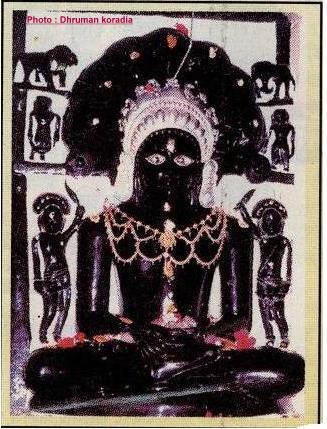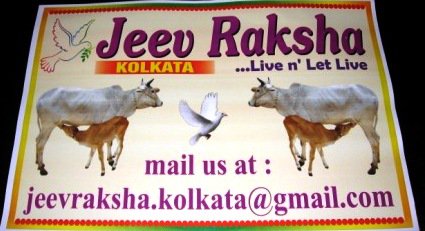Person forgotten in history books
Lord Rishabha Dev
| Details |
|---|
| AlternateName: | Adinatha |
| Historical date: | Pre-history |
| Family |
| Father: | Nabhiraja |
| Mother: | Marudevi |
| Dynasty: | Ikshvaku |
| Places |
| Birth: | Ayodhya |
| Nirvana: | Mount Kailash |
| Attributes |
| Colour: | Golden |
| Symbol: | Bull |
| Height: | 500 dhanusha (1,500 meters) |
| Age At Death: | 8,400,000 purva (592.704 Quintillion Years Old) |
| Attendant Gods |
| Yaksha: | Gaumukh |
| Yaksini: | Chakeshwar |
In Jainism, Rishabh Dev (ऋषभदेव) or Adinatha (आदिनाथ) (other names used: Riṣhabh, Riṣhabhanāth, Rushabh, Rushabhdev, Adinath or Adishwar or Kesariyaji; Sanskrit ṛṣabha meaning "best, most excellent") was the first of the 24 Tirthankara. He belonged to the House of Ikshwaku, which was also known as the "House of the Sun".
Modern scholars are of opinion that Rishabha was a historical person based on many archeological and literary evidences. P. C. Roychoudary puts the date of Rishabha at the end of Stone Age and beginning of Agriculture age. The modern historians like Ramprasad Chandra, Dr. Vilas Sangave , Dr. Heinrich Zimmer, John Marshall, Thomas McEvilley and Mircea Eliade are of opinion that there exists some link between Rishabha and Indus valley civilization. Terracotta seals and other evidences unearthed at the ancient cities of Harrapa and Mohenjo Daro provide a link between Rsabha and Indus Valley Civilisation.
In his Indus Valley Civilisation and Hindu Culture, the eminent scholar P.R. Deshmukh says that the first Jain Tirthankara belonged to Indus Valley Civilisation. Prof. Ram Prasad Chanda, who supervised Indus Valley Civilisation excavations, states in his article Mohen-jo-Daro: Sindh 5000 Years Ago in Modern Review (August, 1932) that, “Not only the seated deities on some of the Indus seals are in Yoga posture and bear witness to the prevalence of Yoga in the Indus Valley Civilisation in that remote age, the standing deities on the seals also show Kayotsarga (a standing or sitting posture of meditation) position. The Kayotsarga posture is peculiarly Jain. It is a posture not of sitting but of standing. In the Adi Purana Book XV III, the Kayotsarga posture is described in connection with the penance of Rsabha, also known as Vrsabha.”
Christopher Key Chappel, quoting many scholars, provides the following evidences connecting Rsabha with Indian valley civilisation :-
1. Seal 420, unearthed at Mohenjodaro portrays a person with 3 or possibly 4 faces. Jaina iconography frequently depicts its tirtahnkaras with four faces, symbolizing their missionary activities in all four directions.
2. Another seal depicts seven persons in upright position with arms somewhat hanging somewhat stiffly and held slightly away from the sides of the body which McEvilley correlates with the Jaina Kayatsarga pose, the posture in which the very first Tirthankara, Rshabha, is said to have entered kevala. While this can be interpreted in may ways, Richard Lannoy however does see Jaina influences on this seal : “That of a nude man represented as a repeat-motif in a rigidly upright position, legs slightly apart, arms held parallel to the sides of his body, which recurs as a Jaina tirthankara, repeated row upon row.
3. Depictions of a bull appear repeatedly in the artifacts of the Indus Valley, Lannoy, McEvilly, and Padmanabh Jaini all have suggested that the abundant use of the bull image in the Indus Valley civilization indicates a link with Rsabha, the first of the twenty four Tirthankaras, whose companion animal is the bull. Rishaba was later Known as Siva, or Pashupati or Shankar with Nandi(bull-vrishbha), who was only connection between Brahminic( aryan) and Sramanic System. Hence Saivism is another form of primitive dravidian sramanic system ( Jainism). Rshaba and Siva's birthday falls on same day. These similarities prove connection between Jain thirthankar Adinath(Rshaba) and Siva ( also known as Pasupati, Mahadev, Sankar, Rudra). Adinath is also also known as Arugar(Murugar) in Tamil , the oldest god of dravidian culture. Dravidians even today are worshippers of Arugar or Adinath (siva).
4. By following Puranik Literature the historical personality Rishabhdeo as a founder of jainism is revealed.
On this basis of antiquity & historicity of Jainism which is prior to Vedic religion -has been established. Dr. Vishudhanand Pathak and Pandit Jaishankar Mishra support this fact and they have written that :-
"Jainism has historical facts and it is non-vedic.It prevailed before vedic influence arrived in India. The Yogi idol found in Indus Valley and certain Mantras of Rigveda prescribe the names of Rishabhdeo and Aristhnemi which are main basis of this ideaology. The story of Lord Rishabh in Bhagwat and Vishnu Puran also clearifies the antiquity of Jain religion". (Bhartiya Itihas and Sanskrati -pages 199-200).
In same manner Jainacharya Vidyanandji has given proof in his thesis "Mohan-jo-daro and Jain Parampra" (page 12) which is to be noted. He has given proof in following manner :-
"That antiquity of Jainism is beyond any discussion, facts of its antiquity can be realised by two means- Archaeologically and Historically. It is difficult to decide as to when Jainism begin, but excavations at Mohanjodaro and Harappa has atleast proven Jainism to be not less than 6000 years old. In excavation naked body of human has been found. The naked position is Kayotsarga posture.Symbol of bull is relevant to Rishab and not relevant to any vedic identity. T.N. Ramchandran who was Chief Director of Archaeological Department at that time, examined it cautiously. In his thesis book "Harappa and Jainism" (at page 4) it is clearly mentioned that the idol is of Rishabhdeo or Lord Rishabh (Adinath). It states that :-
"The idol carved in Kayotsarga Mudra in Harappa is fully a Sramanic, non-vedic idol. On its face the simplicity or grace appears from distance."
Dr. Kashiprasad Jayaswal has also compared the same with the one of oldest idol of Tirthankar (Lord) Mahavir found in India. There is clear resemblance in naked idol of Harappa and this Jain idol. Their superiority is Yog Mudra (The Indus valley civilisation and Rishabhdeo V.G. Nair Page-1). Yoga as claimed by vedic masters ,is originally part of proto-dravidian brahmi , non-sanskrit culture, thus it is non-vedic and considered to be part of Jain, sraminic or vratya culture.
Thirukural also talk about Lord Adinath in its very first stanza, which was written by Jain saint Thiruvalluvar around 1 Century B.C. However Thirukural is again claimed as Vedic literature, at the time when brahminic influence did not exist in South India till late 4th Century A.D. Roots of Jainism is now historically claimed to be more of proto-dravidian and pre-vedic.









